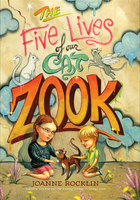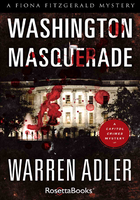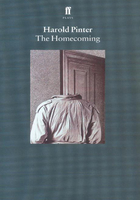We're a curds-loving culture with an appetite for variety that ranges from imported specialty cheeses to squares of cellophane-wrapped singles. But if we had to pick just one cheese, it'd be Cheddar. Not because it's America's most popular cheese—that honor, since 2006, has been held by mozzarella, thanks to our vehement consumption of pizza. We choose Cheddar because it encapsulates the paradox of our country's cooking habits with more elegance than almost any ingredient we can think of. First, there's versatility. Cheddar checks all of the boxes for a cook's needs: easily melted over a burger, delicious when layered into a sandwich or ideal for grating into a sauce or soup.
But then there's the value proposition: Cheddar is an affordable cheese. There's a danger to espousing a cooking philosophy ruled by "inspiring ingredients." It's easy to praise the farmers' market heirlooms or the artisan meats that are far out of reach for many cooks. The version of an ingredient that cookbooks frequently trumpet is often different, sometimes vastly so, from the version that that can be purchased on a budget.
In fact, Cheddar was invented as a way to make cheese more accessible. In the 15th century, cheesemakers in the Cheddar village of England discovered that pressing the moisture (whey) from cheese curds created a product that lasted much longer and was easier to transport and distribute without refrigeration.
Cheddar may have its roots across the pond, but in our minds, it's distinctly American—the perfect blend of versatility, accessibility, craft and commodity.
Broccoli & Cheddar French Dip
MAKES 4 LARGE SANDWICHES
Cheddar is a superior sandwich cheese. It slices well, melts well and has just the right amount of sharpness to make it versatile. But we never knew just how brilliant a Cheddar sandwich could be until this creation from our sandwich guru, Tyler Kord, owner of No. 7 Sub shops in New York and author of Vol. 7: Broccoli.
In Tyler's reimagined French dip, Cheddar and broccoli take the place of roast beef. But as with the original, the real clincher is in the "au jus." Tyler figured out how to make a stock flavored with melted Cheddar and thickened with a roux made of Cheddar fat in place of butter. The result has all the flavor of Cheddar in broth form. Beyond the obvious dipping applications for the sandwich, leftover broth would be brilliant for cooking a pot of beans or as the base of a vegetable soup. One caveat: The melted cheese tends to stick to the stockpot and the strainer, which makes cleaning up a challenge. But a little elbow grease is worth it for this masterpiece.
2 large heads broccoli (1? to 2 pounds/680 to 910 g)
1 large white onion, quartered
8 ounces (225 g) shredded sharp Cheddar cheese (about 2 cups/230 g), plus ? pound (225 g) sliced sharp Cheddar
1 tablespoon plus 1 teaspoon all-purpose flour
3 garlic cloves, smashed
1 tablespoon pure maple syrup
? teaspoon dried thyme
? teaspoon dried rosemary
? teaspoon red pepper flakes
Kosher salt
2 tablespoons olive oil
4 hero-style loaves that have a decent amount of crust, split lengthwise, lightly toasted
Mustard and prepared horseradish, for serving
Preheat the broiler.
Cut the broccoli stems from the heads. Slice the stems into ?-inch coins, and cut the florets into 2-inch pieces; set the florets aside.
On a rimmed baking sheet lined with foil, spread the broccoli stems and onion and broil, turning occasionally, until everything is a little bit burnt around the edges, 12 to 14 minutes. Remove the vegetables from the oven and set aside. Lower the oven temperature to 400°F (205°C).
Meanwhile, spread half (1 cup/115 g) of the shredded Cheddar in an even layer in a medium nonstick skillet and place over medium heat. Cook until the cheese is melted and caramelized on the bottom, 5 to 7 minutes. Using tongs or a spatula, transfer the cheese to a medium stockpot, leaving the cheese fat behind in the pan. Repeat with the remaining shredded Cheddar.
Add the flour to the skillet and use a rubber spatula to stir the flour into the leftover cheese fat. Cook over medium heat, stirring constantly, for 2 to 3 minutes, or until the flour has browned slightly. Add the mixture to the pot with the caramelized Cheddar, followed by the broccoli stems and onions, garlic, maple syrup, thyme, rosemary, pepper flakes, 1 teaspoon salt and 4 cups (960 ml) of water. Bring to a boil over high heat, stirring occasionally. Reduce the heat and simmer, continuing to stir occasionally, and making sure to scrape the bottom of the pan so the cheese won't settle and burn, for 40 minutes. Turn off the heat and let the stock sit for 10 minutes. Strain the broth into a clean saucepan and season to taste; cover and keep warm.
Meanwhile, spread the broccoli florets on the rimmed baking sheet and toss with the olive oil and 1 teaspoon salt. Roast for 12 to 15 minutes, or until the broccoli is cooked and dark in places but still a little crunchy and bright green in other places. Transfer the broccoli to a bowl. Turn the broiler back on. Lay the hero halves on the baking sheet cut-side up, ladle about ? cup (60 ml) of broth over each half and top with a slice of Cheddar. Broil until the cheese is melted, about 3 to 5 minutes.
Divide the broccoli evenly among the bottom halves, then top with the remaining halves and cut the sandwiches in half. Serve with mustard, horseradish and some extra broth on the side for dipping.
Cheddar-Walnut Shortbread
MAKES ABOUT 6 DOZEN
Keeping a roll of this dough in your freezer is like having money in the bank—it makes on-the-fly entertaining effortless. This recipe has roots in a classic hors d'oeuvre of the American South: Cheddar pennies, a homemade precursor to the Cheez-It. Here, the ratio of Cheddar is cranked up so that each bite is undeniably cheesy but retains that crumbly butter-laden shortbread texture. The egg wash is optional and its purpose entirely aesthetic, like an Instagram filter for baked goods. Brush it on the surface of the shortbread before baking for a shiny gloss; omit it for a matte look.
? cup (60 g) walnut pieces
3 cups (345 g) coarsely grated extra-sharp Cheddar cheese (orange or white)
? cup (1 stick/115 g) unsalted butter, cut into 8 pieces and softened
1 large egg, separated
1 tablespoon minced rosemary
2 teaspoons sweet paprika (preferably smoked, such as Pimentón de la Vera dulce)
? teaspoon salt
? to ? teaspoon cayenne pepper
1? cups (155 g) all-purpose flour
Black sesame seeds, for garnish
Preheat the oven to 350°F (175°C). Toast the walnuts on a rimmed baking sheet until they smell fragrant and the skins are deep golden, 10 to 12 minutes. Chill the walnuts in the freezer until cooled completely, about 20 minutes. Transfer the walnuts to a food processor and pulse until finely chopped, then transfer to a small bowl (do not clean the processor).
Add the Cheddar, butter and egg yolk to the food processor and blend, stopping and scraping down occasionally, until smooth. Add the rosemary, paprika, salt and cayenne pepper and blend well. Add the flour and walnuts and pulse until just combined.
Gather the dough into a ball and divide it in half. Place each half on a large sheet of waxed paper and form each into 10-inch logs. Roll each log in the waxed paper—like forming snakes from clay—to make it as round and even as possible (if the dough is too soft to work with, chill the wrapped log until firmer but still malleable, 1 to 1? hours).
Refrigerate the logs until very firm, at least 3 hours or overnight. If chilling overnight, wrap the waxed-paper roll tightly in foil or plastic wrap.
Preheat the oven to 350°F (175°C). If the dough has been previously frozen, let it thaw slightly, about 30 minutes (it should still be pretty firm). Cut one roll of dough crosswise into ?-inch-thick rounds and arrange them, 1 inch apart, on a parchment-lined baking sheet (if the dough becomes too soft at any point, quick-chill in the freezer for several minutes). If desired, lightly brush the rounds with beaten egg white before sprinkling the center of each round with a few sesame seeds, gently pushing them into the dough with your fingers (you can add the seeds without using the egg white).
Bake the shortbread until the edges of the rounds are golden and the tops are set when lightly touched, 12 to 14 minutes. Slide the parchment with rounds onto a large rack to cool. Continue slicing and baking rounds from the remaining chilled dough log.
(The rolls, wrapped in waxed paper and foil or plastic wrap, can be frozen for 3 months. For entertaining, shortbread rounds can be baked 2 days ahead, cooled completely and stored in an airtight container at room temperature. Leftovers will keep 5 days if you manage not to devour them before then.)
Cheddar Obatzda
MAKES 2? CUPS (500 G)
This recipe comes with a built-in beverage pairing. After you've measured out the beer that this Bavarian-style beer cheese requires, there's the bulk of a bottle left for sipping while you quickly whip this spread together.
Obatzda packs plenty of punch to be so simple. A close relative of Liptauer cheese, an Eastern-European spread spiked with paprika and caraway, this German interpretation, frequently found on Biergarten menus, takes its cues and flavor from the beverage with which it's often paired.
Make sure your butter and cream are at room temperature before you begin so that everything incorporates nicely. The finished product is great with pretzels or as part of a ploughman's lunch with a few slices of hearty smoked sausage and pickles.
? cup (? stick/55 g) unsalted butter, at room temperature
6 ounces (170 g) cream cheese, at room temperature
1 tablespoon finely grated shallot
1 tablespoon smoked paprika
Salt and freshly ground black pepper
8 ounces (225 g) sharp Cheddar cheese, finely grated
8 ounces (225 g) mild Cheddar cheese, finely grated
4 to 6 tablespoons (60 to 90 ml) dark beer (such as brown ale)
1 small red onion, thinly sliced
Rye bread and/or soft pretzels, for serving
In a stand mixer fitted with the paddle attachment, cream the butter and cream cheese at medium-low speed until smooth. Add the grated shallot and paprika; season with salt and pepper. Add the cheeses, mixing until combined, then the beer, 1 tablespoon at a time, until the mixture is spreadable. Serve at room temperature with red onion, rye bread and/or soft pretzels.
Kimcheese
MAKES ABOUT 2 CUPS (480 ML)
The history of pimento cheese isn't very romantic. At the beginning of the industrial food movement in the late 19th century, two new products came to market around the same time: a Neufchatel-style cheese that would later become cream cheese, and canned sweet red peppers imported from Spain. The coincidental appearance of these two ingredients quickly bore the earliest version of what we now know as pimento cheese. Timing, in this case, was everything.
The popularity of this creamy spread waned over the decades, and its geographical orbit moved from the factories of the North to the pepper fields of the South, from cream cheese to hoop cheese (a mild, easy-to-make farmer cheese) bound with mayonnaise. It was relegated to a regional Southern food and forgotten about everywhere else.
Recently, pimento cheese has broken back into the mainstream, appearing with regularity across the country and across highbrow and lowbrow demarcations. And what other ingredient has its star rising from genre-specific cooking to all-out pantry staple? Kimchi, Korea's funky fermented pride. The bite and heat of kimchi is an easily defended substitute for the peppers in pimento cheese; it provides an extra layer of texture and an umami-rich sharpness that gives the spread character. So here we are, with a new version of pimento cheese that is once again a cause of good timing. Like it was fated. (Maybe this is a romantic story, after all.)
8 ounces (225 g) extra-sharp Cheddar cheese, coarsely shredded
1 cup (230 g) finely chopped and drained kimchi
1 teaspoon sugar
3 to 4 tablespoons (45 to 60 ml) mayonnaise
Sriracha sauce or chile paste, to taste (optional)
In a medium bowl, stir together the Cheddar, kimchi and sugar.
Fold in enough mayonnaise just to bind the mixture together. Add Sriracha to taste, if needed. (The heat level of kimchi varies from brand to brand. This spread should have a noticeable kick, but not be so spicy that it overwhelms the Cheddar.)
For the best flavor, cover and refrigerate for 1 day before serving. Store for up to 2 weeks.
Grilled Kimcheese Sandwich
This was inevitable, right? Spread ? cup (60 ml) of kimcheese on a slice of white bread and top with a second slice of bread. Spread 1? teaspoons of mayonnaise on each face of the sandwich. Heat a skillet over medium heat. Add the sandwich and cook until the cheese in the center is melty and the bread is golden brown, about 4 minutes a side. Serve with a cold beer.
Cheddar-Stout Bitterballen
MAKES 30; SERVES 8 AS AN APPETIZER
It's hard to believe that these breaded meatballs of Dutch origin don't traditionally have cheese in them. The addition of Cheddar improves on the recipe in great ways, like a cover that you listen to more than the original song. Each bite shape-shifts between meatball, croquette and arancini, a triumvirate of the world's best bite-size snacks.
These bitterballen also illustrate Cheddar's worth in the kitchen more than many dishes with longer, stronger ties to the cheese. It picks up on Cheddar's affinity with beer in a mornay sauce that uses Guinness instead of milk. Then it reminds us, by way of an advertisement-worthy molten, gooey center, that nothing beats melty, oozy cheese.
1? pounds (570 g) boneless chuck roast, halved
Kosher salt and freshly ground black pepper
? cup (? stick/55 g) unsalted butter
? cup (30 g) all-purpose flour
? cup (120 ml) stout beer, such as Guinness
1? cups (170 g) shredded sharp Cheddar cheese, plus about 1 ounce cut into ?-inch dice
? teaspoon freshly grated nutmeg
2 tablespoons finely chopped parsley
2 scallions, finely chopped
2? cups (250 g) dried bread crumbs
3 large eggs, beaten
Vegetable or peanut oil, for frying
Dijon mustard, for serving
Place the chuck in a medium pot and add water to cover it halfway. Add 1? teaspoons salt and a few grinds of pepper and bring to a boil over medium-high heat. Reduce the heat to maintain a gentle simmer and cook, covered, flipping the meat occasionally, until very tender and the meat pulls apart easily with a fork, about 3 hours. Transfer the meat to a cutting board to cool. Reserve ? cup (120 ml) of the cooking liquid and discard the rest.
Use your fingers to shred the meat into small pieces, then evenly chop the shredded pieces. Transfer to a medium bowl.
Melt the butter in a medium saucepan over medium heat. Add the flour and cook, stirring, 1 minute. While whisking, add the reserved cooking liquid and the stout. Continue to cook, whisking often, until the mixture starts to boil, then cook for 1 minute longer; the mixture will thicken considerably. Turn off the heat and whisk in the shredded cheese and nutmeg until the cheese melts completely. Cool to room temperature.
Stir the cheese mixture into the meat along with the parsley and scallions. Season with salt and pepper. Line a baking sheet with parchment paper. Spoon out about 1 tablespoon of the meat mixture. Flatten it slightly in your hands and place one piece of the diced Cheddar in the center. Gather the mixture around the cheese and roll it into a ball. Place it on the baking sheet and continue with the remaining meat and cheese.
Place the bread crumbs in one shallow bowl and the eggs in another. Working with one meatball at a time, roll a ball in bread crumbs then roll it to coat in the egg. Let the excess egg drip off and return it to the bread crumbs, rolling to coat thoroughly. Return the breaded meatball to the baking sheet and repeat with the remaining meatballs.
In a wide shallow pot, heat about 2 inches (5 cm) of oil until it reaches 350°F (175°C) on a deep-fry thermometer. Fry half of the meatballs, stirring occasionally, until deep golden brown, about 2 minutes. Transfer to a paper towel–lined plate to drain and fry the remaining meatballs. Serve immediately with Dijon mustard for dipping.
Cheddar & Rye Gougères
MAKES ABOUT 4 DOZEN
Most gougères we come across are dainty little numbers, where cheese is more of a suggestion than a driving force. They're undeniably French, from the pate à choux base down to the Comté cheese that traditional recipes call for.
Here, gougères get an American makeover that allows them to move seamlessly between the worlds of high tea and Miller High Life. Rye flour adds an edgy weight to the light-as-air dough, but the driving flavor is the sharp Cheddar, which imbues each buttery bite with undeniable cheesiness. It's the everyman's cheese puff.
? cup (65 g) all-purpose flour
? cup (50 g) rye flour
? teaspoon freshly ground black pepper
? teaspoon salt
2 teaspoons thyme leaves or finely chopped chives
1 cup (240 ml) water or beer (preferably a lager or stout), poured and settled
? cup (1 stick/115 g) unsalted butter, cut into cubes
4 large eggs, at room temperature
1? cups (170 g) grated sharp Cheddar cheese, divided
Preheat the oven to 400°F (205°C). Place racks in the top and bottom thirds of the oven.
In a medium bowl, combine the all-purpose flour, rye flour, pepper, salt and thyme and set aside.
In a large saucepan, combine the water or beer and butter and bring the mixture to a boil over high heat. Once the butter has melted, add the flour mixture all at once and stir vigorously with a wooden spoon. The mixture will look rough at first, but it will suddenly become smooth. Reduce the heat to medium and continue to stir for about 1 minute, until the dough pulls away from the sides of the pan. Transfer the dough to a bowl or to the bowl of a stand mixer fitted with the paddle attachment and let cool for 10 minutes, occasionally stirring or turning the mixer on briefly to help the cooling process. (Don't leave the mixer running or you risk overworking the dough.)
With the mixer running, add the eggs, one at a time, beating vigorously after each addition and stopping to scrape down the bowl before adding the next egg. Each egg should be fully incorporated before the next is added. Do not worry if the mixture looks curdled; that's normal. Simply continue beating until the dough is smooth. When the last of the eggs is incorporated, beat in 1 cup (115 g) of the Cheddar. The dough should be smooth, shiny and sticky. At this point, you can wrap the dough in plastic and refrigerate for up to 4 hours before using it.
Scoop the dough into a pastry bag fitted with a ?-inch tip and pipe small (about 1 inch wide and 1 inch high) balls onto parchment-lined baking sheets, spacing them a couple inches apart. (You can also use two spoons to drop the dough onto the baking sheet.)
Sprinkle the gougères with the remaining ? cup (55 g) of Cheddar. Bake for 15 minutes. Reduce the heat to 350°F (175°C), rotate the baking sheets between the top and bottom racks and bake until brown and firm, 10 to 15 minutes longer. Transfer the gougères to a wire rack to cool. These are best the day they're made, but can be made a day ahead and rewarmed in the oven.
Celery-Cheddar Salad with Horseradish-Cider Vinaigrette
MAKES 4 SERVINGS
One of our favorite styles of Cheddar is the mature stuff, aged for a couple years or longer. These senior citizens have a crystalline bite to their texture (they crumble quite easily) with every bit of concentrated, nutty flavor as a chunk of Parmigiano-Reggiano. Cheddar doesn't melt as well in its old age, but it's unbeatable on a salad or a cheese plate. Here, we've coupled it with some of its most reliable playmates: celery, apples, olives and horseradish.
2 bunches celery
1 tablespoon fresh lemon juice
2 tablespoons apple cider vinegar
2 tablespoons honey (or Apple Cider Molasses, this page)
2 teaspoons Dijon mustard
2 teaspoons prepared horseradish
1 cup (240 ml) neutral vegetable oil
Salt and freshly ground black pepper
? cup (13 g) chopped parsley
20 pitted green olives, roughly chopped (mild, buttery versions such as Castelvetrano work best)
2 ounces (55 g) two-year-aged white Cheddar cheese
Remove the base and tips of each celery bunch and separate all of the stalks. Thinly slice the stalks on a bias (a mandoline is great for this) and place in a medium bowl. Toss with the lemon juice and set aside.
In a small bowl, whisk together the vinegar, honey, mustard and horseradish. While whisking, add the oil in a slow, thin stream until the vinaigrette emulsifies and thickens. Season to taste with salt and pepper.
Drain the celery and return it to the bowl. Add the parsley and olives and toss with your hands. Drizzle with ? cup (60 ml) of the vinaigrette and toss well to coat. Season generously with pepper.
Using a Y-shaped vegetable peeler, cut the Cheddar into thin strips. Crumble the strips into craggy pieces and sprinkle them over the salad. Toss the salad to incorporate the Cheddar, season with additional salt and pepper, if needed, and serve.
Mornay Macaroni & Cheese
MAKES 4 SERVINGS
This mac and cheese isn't going to revolutionize the way you think about the dish. In fact, the opposite is true: It's the recipe we can rely on to deliver exactly what we want out of this comfort-food institution. Under a molten cap of melted cheese and bread crumbs, the noodles are clad in creamy, cheesy sauce. It's the mac that every boxed and frozen TV dinner version tries so hard to re-create.
To maximize the perfect crust-to-creamy ratio, be stingy with the oven time, and cook the dish in a shallow, wide pan (such as a skillet). Since the mornay is already cooked through, you're simply using the broiler to melt and caramelize the cheese crust. And using a wide vessel creates more surface area for that crispy topping.
12 ounces (340 g) dried elbow macaroni
2 cups (480 ml) Mornay Sauce (recipe here)
Kosher salt and freshly ground black pepper
? cup (55 g) grated Cheddar cheese (your preference of sharpness)
? cup (45 g) coarse Bread Crumbs (see this page), optional
Cook the macaroni in salted water until al dente. Drain and return to the pot. Add the Mornay sauce, stirring to coat the macaroni. Season to taste with salt and pepper.
Transfer the macaroni to a large skillet or shallow casserole dish and spread the grated cheese evenly over the top. Top with bread crumbs, if using. Preheat the broiler and arrange a rack about 4 inches from the heating element. Broil the macaroni and cheese until the cheese on top is melted and the crumbs are deeply browned, about 4 minutes (watch carefully, as broiler intensity varies). Serve hot.
Mornay Sauce
MAKES 2 CUPS (480 ML)
Mornay sauce (along with its cheese-free sibling, béchamel) is a first-week-of-cooking-school recipe, essential and classic. Melted cheese is delicious when it covers a plate of fries or nachos, but it needs the presence of milk to become the creamy, velvety sauce that defines so many cheesy recipes. Mac and cheese is first on that list (see above), but lasagna, croque-madames and any vegetable gratin strengthen the argument for Mornay's induction in the cooking hall of fame. We prefer sharp Cheddar in Mornay because it has enough lactic tang (the characteristic often defined as "sharpness") to help create contours of flavor within the sweet, mild combination of milk and butter.
2 cups (480 ml) milk
2 tablespoons unsalted butter
3 tablespoons all-purpose flour
1? cups (170 g) grated Cheddar cheese
Kosher salt and freshly ground black pepper
Ground nutmeg
In a small saucepan, heat the milk over medium heat until it just begins to bubble at the edges. While the milk heats, melt the butter in a medium saucepan over medium heat. When the butter stops foaming, whisk in the flour. Cook, whisking, for 30 seconds. Gradually whisk in the hot milk and let the mixture come to a boil over high heat, whisking occasionally. Let the milk boil for 1 minute, at which point the mixture will thicken visibly.
Remove the pan from the heat and add the cheese, whisking until smooth. Season to taste with salt, pepper and nutmeg. If you won't be using the sauce immediately, transfer it to a bowl and press a sheet of plastic wrap directly onto the surface of the sauce to prevent a skin from forming. Refrigerate until ready to use, up to 2 days.
Bedazzle Your Mac
Although there's a strong argument for going the purist route, there are endless ways to customize mac and cheese. With this recipe, just make sure that any ingredient you add to the mix is already cooked through since the dish doesn't spend much time in the oven. Here are some of our favorite mix-ins:
? Roasted mushrooms
? Roasted broccoli
? Crispy bacon lardons
? Roasted tomatoes















